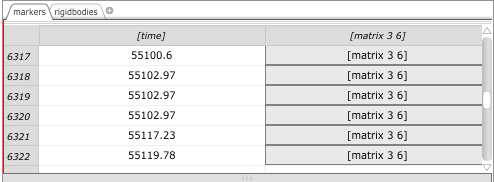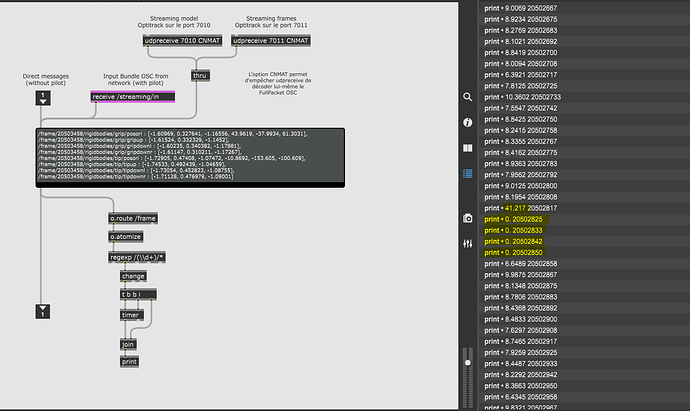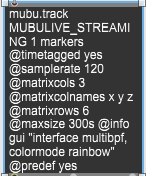Hello,
I have an SDIF file containing the motion data of a cellist with its instrument (https://we.tl/t-NcJSFjf0X2).
This file has been written from a MUBU container containing 2 tracks :
- markers (the X,Y,Z coordinates of each marker) with the info table
SDIF.StreamId 1 SDIF.FrameSignature XMMK SDIF.MatrixSignature XMMK SDIF.MatrixName Markers - rigidbodies (the X,Y,Z,Yaw,Pitch,Roll of the bow and the cello) with the info table
SDIF.StreamId 2 SDIF.FrameSignature XMRB SDIF.MatrixSignature XMRB SDIF.MatrixName Rigibodies
I’m facing two problems with this MUBU-generated SDIF file :
1/ I cannot read the SDIF file with other softwares.
Actually, the frame/matrix SDIF structure seems inconsistent regarding the second stream (XMRB).
I tried the SDIF-Edit program (https://github.com/j-bresson/SDIF-Edit/releases) and PYSDIF3 Python library (pysdif3 · PyPI)… Both give the same error at reading :
*Sdif* Warning 20: SdifFile: data/cellist.sdif (byte: 1224=0x04c8=0002310), TextFile: (null) FramH : XMRB Size: 0x0050 NbMatrix: 1 NumID: 2 Time: 0.0020466 MtrxH : XMRB DataWidth: 0004 Rows: 2 Columns: 6 --> Matrix is not in frames components : XMRB
2/ I cannot add a 1NVT table in the SDIF file.
Actually I’d like to get the matrix column names of my 2 SDIF streams and I thought to do it by adding two key/value properties in the 1NVT table produced by the MUBU container… Something like that :
- marker_names = « head_x, head_y, head_z, etc… »
- rb_names = « bow_x, bow_y, bow_z, bow_yaw, bow_pitch, bow_roll, etc… »
But I don’t know how to do this with MUBU (whereas it was quite straightforward with the ftm.sdif.write object).
I tried to add my key/value pairs in the info table of the buffer containing my MUBU tracks, but without more success… This buffer info table doesn’t seem to be exported as a 1NVT table in the resulting SDIF file.
Please would you have some suggestions regarding these two MUBU/SDIF issues ?
Best,
Jojo




